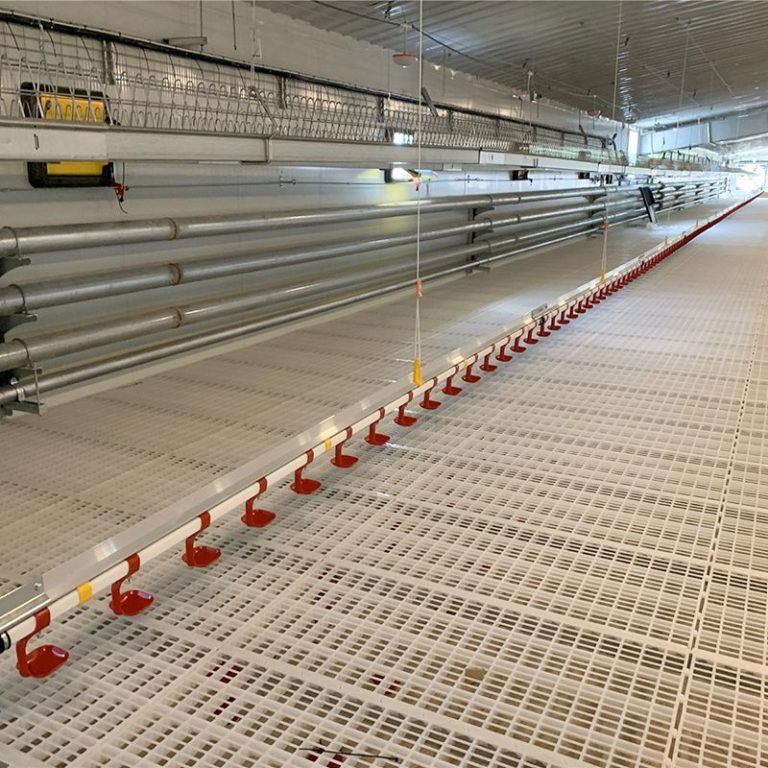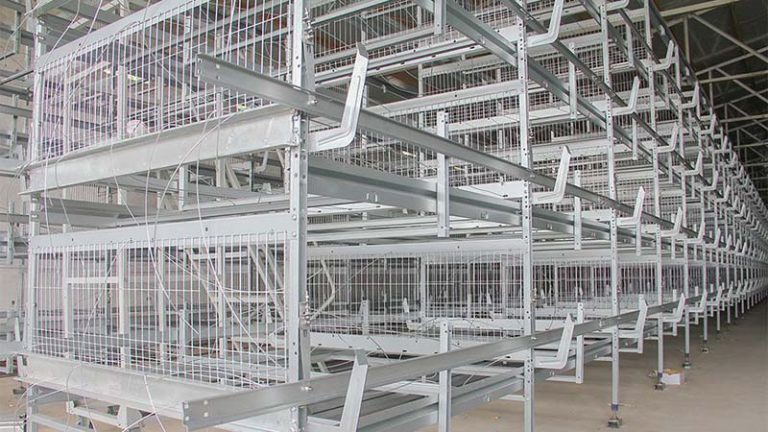Five Key Points to Consider When Raising Chickens in Winter

The temperature fluctuates significantly between day and night in winter. To ensure a warm and comfortable living environment for the poultry and to optimize their productivity, several crucial aspects need attention.
First: Temperature, a Constant Concern in Poultry Farming
Maintaining a temperature between 18°C to 23°C inside the chicken coop is ideal, not dropping below 15°C. During windy weather, raise the tent cover accordingly (either halfway or completely) based on the external temperature changes to prevent a sudden drop in the coop’s temperature due to gusts. Adjust the air inlet daily according to the weather and the behavior of the flock. Secure the plastic sheets and plywood with wires or ropes to ensure the wind blows upwards, avoiding direct cold drafts on the chickens, preventing cold stress, and disease. Do not open the window directly facing the temperature control device to prevent direct cold air blowing, resulting in inconsistent readings. Before the onset of winter, clean the dust from the heaters. When starting the heaters, keep the vents parallel to ensure even distribution of warm air. Close both the main entrance and the coop’s doors at the same time to avoid direct cold drafts. Regularly monitor the flock; if they perch on rafters with ruffled feathers, the coop might be too cold. Adjust the air inlets or block drafts in areas where there are no or few chickens to prevent stress and illnesses. Check fan belts and motors daily before leaving, and keep an eye on weather forecasts for preventative measures.
Second: Ventilation, an Inescapable Concern in Poultry Farming
During winter, as coop doors and windows are tightly shut due to low temperatures, the reduced ventilation causes the accumulation of harmful gases like ammonia, carbon dioxide, and hydrogen sulfide from chicken waste and fermentation, leading to respiratory issues. Therefore, it’s crucial to balance ventilation and warmth by promptly removing waste and debris from the coop. Limited ventilation may call for localized measures to disinfect the coop with peracetic acid to neutralize ammonia and maintain fresh air.
Patch up areas that shouldn’t have drafts before winter, especially sealing leaks around exhaust fans to prevent local cold air pockets, ensuring proper ventilation and preventing diseases in the flock. When ammonia odor becomes strong, first raise the coop’s internal temperature and then increase ventilation. If the coop’s air becomes polluted in the morning, gradually increase ventilation, preferably during midday when temperatures are higher, by shorter but more frequent intervals to ensure proper air circulation. Always ensure no dead spots during ventilation. If additional exhaust fans are needed, be cautious and observe the flock’s reaction before proceeding.
Third: Humidity, a Challenge in Poultry Farming
During winter, bedding tends to be drier, posing a challenge in controlling coop moisture. Insufficient air exchange over time leads to moisture accumulation in the bedding, increased ammonia production, and potential footpad and leg problems. Conversely, excessive air exchange leads to dry coops and increased heating costs. Additionally, in poorly ventilated coops during winter, reduced moisture evaporation causes hot air inside to condense into droplets on cold roofs and walls, leading to excessive humidity and creating ideal conditions for bacteria and parasites.
Therefore, regular spraying or misting for disinfection is necessary. If there’s pooled water under the coop, increase ventilation when the coop temperature is suitable. Reduce water pressure to below 10 centimeters or lower water levels in the drinkers to 1 centimeter. Regularly inspect and promptly repair any leaking drinkers to prevent excessive ammonia and affect the flock’s health.
Temperature and humidity are two crucial environmental factors affecting broiler chicken growth and development. Proper control of these factors directly impacts the growth of broiler chickens.
Fourth: Coop Temperature Control
Broiler chickens are small and have sparse feathers in the early rearing stages, with a limited ability to regulate body temperature, making them highly sensitive to temperature changes. Therefore, it is essential to create a suitable temperature environment for them. Temperature is the most critical factor during the brooding stage.
Broiler chickens raised in an appropriate temperature environment exhibit higher survival rates, growth rates, and feed efficiency. The suitability of temperature can be determined by observing the dynamic behavior of the chicks:
- In appropriate temperatures, chicks are evenly dispersed, active, with smooth feathers adhering closely to their bodies. They sleep quietly and eagerly eat.
- When temperatures are too low, chicks huddle near heat sources or in corners, their feathers ruffled, showing signs of lethargy and continuous chirping, which, if prolonged, can cause colds or suffocation. Immediate heating and dispersion of clustered chicks are necessary.
- In excessively high temperatures, chicks move away from the heat source, stretch out their wings, gasp for breath, drink water excessively, and the drinkers are often dry despite the chicks being wet. Prolonged exposure can weaken chicks’ constitution, hinder growth, or even cause death. Gradually reduce temperatures, avoiding sudden changes that could induce colds.
Hence, controlling coop temperature is crucial throughout the entire rearing period of broiler chickens. Place thermometers in strategic locations within the coop for monitoring and take measures to regulate heating or cooling. During hot seasons, increase ventilation by opening doors, windows, and air vents or fans to lower the coop’s temperature. Additionally, sprinkling water on the floor or misting on the roof can aid in cooling if necessary.
During cold seasons, bolster coop insulation, close doors and windows, and use stoves, heating ducts, heaters, or infrared lamps for warmth. However, consider proper ventilation to prevent respiratory diseases, ascites, suffocation, or poisoning. Adequate insulation materials for coop roofs and walls are crucial for both cold and hot weather.
Fifth: Coop Humidity Control
In general, relative humidity has a minimal impact on poultry flocks. Maintaining dryness is preferable to prevent bacterial reproduction and infection, but relative humidity should not drop below 40%. During the first two weeks of brooding, humidity should be maintained between 60%-70%, subsequently reduced to 50%-60%.
In the early brooding phase, when conditions are excessively dry, sprinkling water on the floor or walls or using evaporative pans on heat sources can help increase humidity. As the broiler chickens grow, their intake of feed, water, respiration, and excretion increase, causing humidity levels to rise. During rainy seasons, excessive humidity is common, and measures like timely removal of wet manure and litter, increased ventilation, and using moisture-proof coatings on coop floors can be effective in controlling humidity.
These measures should be taken to maintain the optimal conditions for broiler chicken growth and health.





